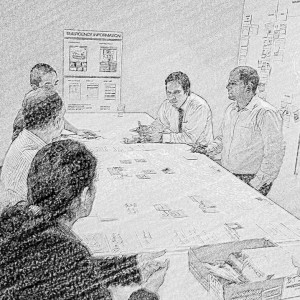So what is a Team, anyway?
‘Team’. It’s such a buzzword. Or has it passed beyond that, to be a word that we hardly even notice anymore? Anyway, the fate of most buzzwords is to be used so indiscriminately that they become meaningless, and that’s what we think has happened to the word ‘team’. It’s now used to mean any group of people who work together, on any task, of any nature; or even just people who work in the same organisation.
This is wrong, misleading, and unhelpful. It hides a very important distinction between teams and non-teams ..
Consider these three groups of co-workers:
- A group of sales people who sell the same range of products, in different territories.
- A group of workers in a tech support call centre. If they cannot solve the problem themselves after ten minutes, they ‘escalate’ the call to another worker.
- A group of people working on a software project, including developers, statisticians, business analysts, user interface experts, and end users.
Which of these groups would you call a team?
Our take on the question:
The first and second examples are not teams, because the people in them essentially work independently of one another — even though they may work in the same physical space, doing the same thing. It is possible for a person in either of these groups to help another worker, of course, but they are not dependent on one another to achieve their goal. A sale is made by an individual, and a tech support ticket is closed by an individual.
The software development team is different. They are a team, because the success or failure of the project depends not only on all of the team members doing their own jobs, but also on their co-operation. They literally cannot do the job of building the product by themselves.
So, for a manager or team lead, a fundamental question is whether her people work as individuals, or as a team. This leads to important consequences for how people should be managed. A manager of a group of individual workers needs to manage them as individuals. In contrast, a team leader needs to pay more attention to the processes that happen ‘in-between’ the individuals in the team, and the states that occur ‘across’ the individuals in the team.
